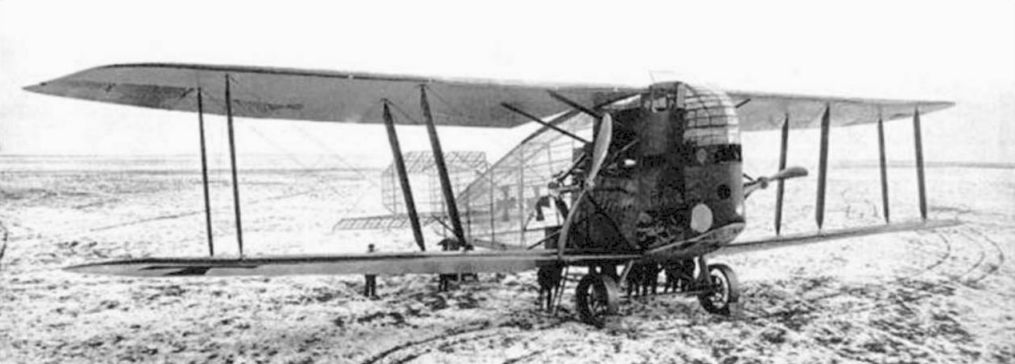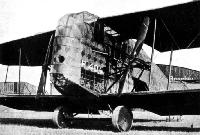
Linke-Hoffman R.I и R.II
Linke-Hoffman R.I Riesenflugzeug - неудачный проект бомбардировщика, первый полет самолет совершил в 1917 году. Он отличался широко расставленными верхним и нижним крылом и деревянным фюзеляжем, обтянутым материалом из целлона (ацетилцеллюлозы).
R.I получился не особо удачным самолетом, хотя ряд отчетов современников был достаточно положительным. Первый самолет, 8/15, разбился из-за поломки крыла, погиб один член экипажа. Второй самолет тоже попал в аварию - во время посадки - и уже не восстанавливался.
<...>
- Описание
Фотографии
-
Авиация и Космонавтика 2015-02 / ??? - "Цеппелины" тяжелее воздуха
We're back again to the odd-man-out department with the German "Riesenflugzeug' (giant aeroplane), the Linke-Hofmann Li R I, produced by Linke-Hofmann-Werke of Breslau in 1917 as a long-range heavy bomber. The LHWs - Li R I (serial R.8/15 - as shown), improved LiR I (R.40/16) and the Li R II (R.II 55/17) deserve a larger canvas than my few brief words here. Some idea of the size of this extraordinary behemoth may be gleaned by comparing the height of the men standing behind the lower main-plane; the main wheels were solid iron hoops with equally solid rubber tyres. Visible in the original print are one, two, three, four, five, and possibly six winter-coated soldiery peering out of the lower sun deck. In the penthouse above, well above, is the flight deck, suitably finished off with handsome leather side-by-side seating. For some strange reason (to confuse the Allies?) the rear fuselage and tail assembly were given transparent covering. The two tractor propellers were supplied with drive from a veritable powerhouse amidships comprising four 260-h.p. Mercedes engines. The wing span of the Li R I was some 108 ft., the length 51 ft. and the height about 22 ft. It is almost a foregone conclusion that the Li R I was not a success; the first was burnt out in an accident in May 1917, while the improved Li R I (R.40/16) partially suceeded in the excavation business when the pilot misjudged his height during a normal landing. Which, one might add, drove the designers back to the drawing-boards.
-
Мировая Авиация 172
Linke-Hoffman R.I был огромен и напоминал чем-то "летающий собор", но конструкция машина была недостаточно прочной, и оба прототипа потерпели аварию.
-
Авиация и Космонавтика 2015-02 / ??? - "Цеппелины" тяжелее воздуха
Тяжелый «трехэтажный» бомбардировщик «Линк-Хоффман», 1917 г. Размах крыла - 32 м, взлетный вес - 11 т. Четыре двигателя мощностью по 260 л.с., установленные внутри фюзеляжа (на средней палубе), приводили во вращение два воздушных винта. Всего было построено два самолета, в боях не применялись. Первый экземпляр бомбардировщика «Линк-Хоффман» покрывался прозрачным материалом целлоном, что по задумке конструкторов должно было сделать самолет малозаметным в воздухе.
- Фотографии


